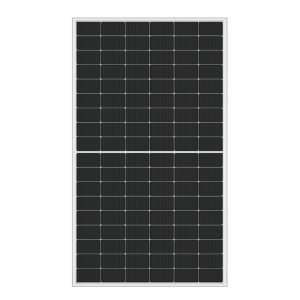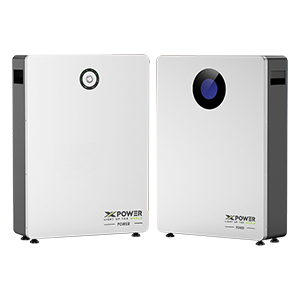Knowledge about the efficiency of solar panels
Time of Release : 2023-10-12
Solar energy is a clean and renewable source of electricity that has become increasingly popular worldwide. One key component of solar power systems is the solar panel, which converts sunlight into direct current (DC) electricity through the photovoltaic effect. The efficiency of a solar panel refers to the percentage of sunlight that it can convert into usable electricity, and is influenced by various factors such as materials, design, temperature, and shading.

Historically, solar panels were made of crystalline silicon (c-Si) wafers that used expensive and energy-intensive processes to purify and crystallize the raw material. However, newer types of solar cells have emerged in recent years, including thin-film, organic, perovskite, and tandem cells, that offer different advantages and challenges. The table below shows some typical efficiencies of different solar cell technologies, as reported by the National Renewable Energy Laboratory (NREL) in the United States.
Technology Efficiency (%)
Mono c-Si 22.7
Poly c-Si 20.5
CdTe thin-film 21.0
CIGS thin-film 23.7
Organic 10.8
Perovskite 25.5
Tandem 29.1
As can be seen, the highest efficiency achieved so far is 29.1% for a tandem cell that combines two or more materials with complementary optical and electrical properties. However, this record was set in a laboratory under ideal conditions, and commercial versions of the technology may have lower efficiencies due to practical limitations such as cost, stability, and scalability. Therefore, it is important to balance efficiency with other factors such as reliability, durability, and affordability when choosing a solar panel for a specific application.
The design of a solar panel also affects its efficiency, as different configurations of solar cells, connectors, coatings, and frames can affect how much sunlight is captured and converted. Some common design factors that can improve or reduce solar panel efficiency include:
Cell size and shape: Smaller and rounder cells can reduce shading losses and improve series connection, but may increase processing costs and resistive losses.
Interconnection: Parallel connections of cells can reduce the effect of shading and minimize current mismatch, but may increase internal resistance and susceptibility to hotspots.
Anti-reflection coating: A thin film layer on the top of the cells can reduce the reflection of sunlight and increase the absorption, but may also introduce additional cost, complexity, and durability issues.
Backsheet: A protective layer on the bottom of the cells can prevent moisture, dust, and impact damage, but may also affect heat dissipation and adhesion.
Frame: A sturdy and weather-resistant frame can support the weight of the panel and facilitate installation and maintenance, but may also cast shadows and reduce airflow.
Finally, solar panel efficiency is also affected by external factors such as temperature and shading. When a solar panel gets hotter, its electrical conductivity decreases, leading to lower output voltage and higher current. Therefore, it is important to choose a solar panel with a temperature coefficient of power (Pmax) that matches the local climate conditions. Shading from trees, buildings, clouds, or other objects can also decrease the amount of sunlight that reaches a solar panel, causing hotspots, reverse currents, and reduced performance. To avoid shading, solar panels should be installed at a suitable angle and orientation that maximizes solar exposure, and may use devices such as bypass diodes, shade balls, or trackers to mitigate the effects of partial shading.
In conclusion, solar panel efficiency is a key parameter that determines how much electricity can be generated from sunlight, and depends on various factors such as materials, design, temperature, and shading. By balancing efficiency with other criteria such as cost, reliability, and scalability, solar energy can contribute to a more sustainable and resilient energy future.





